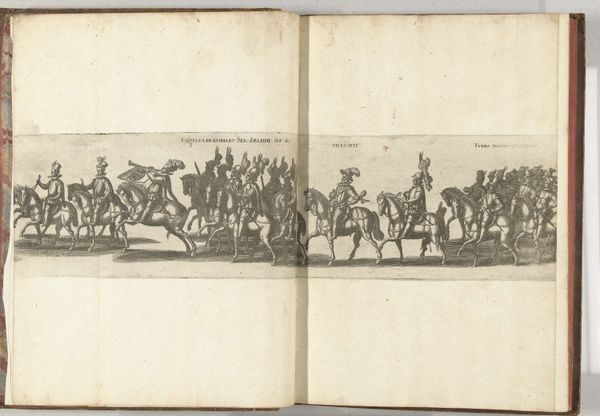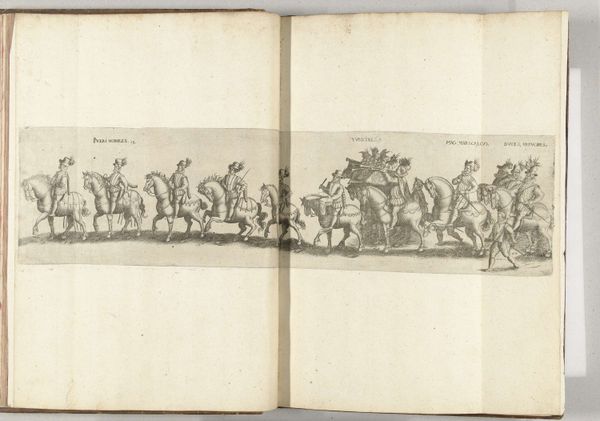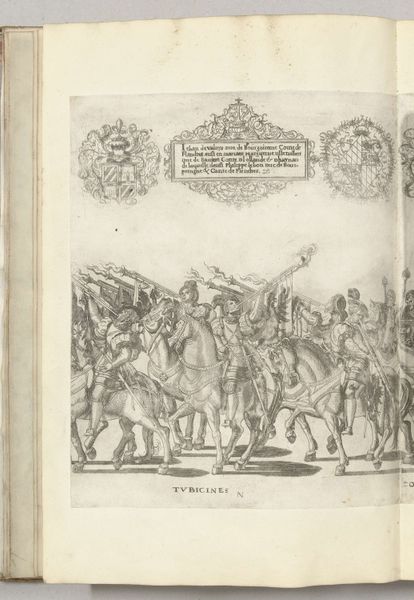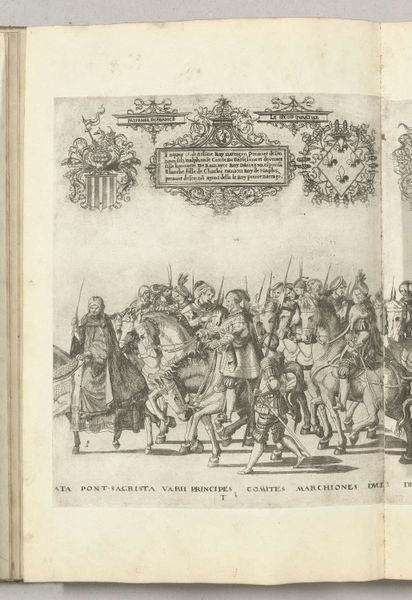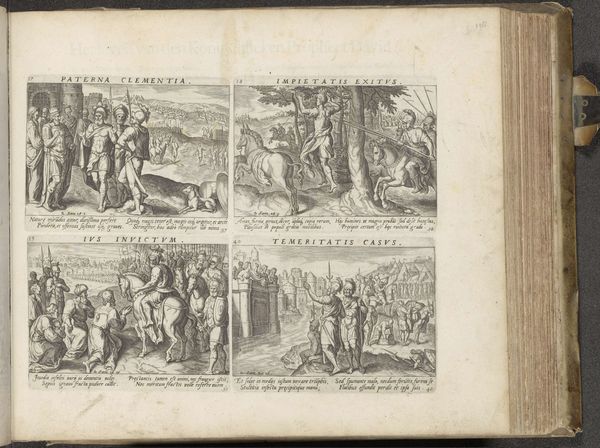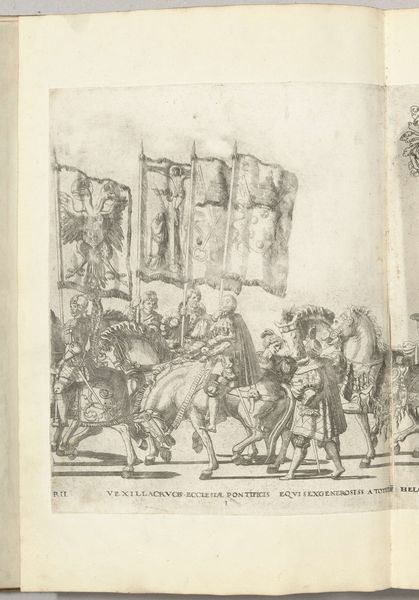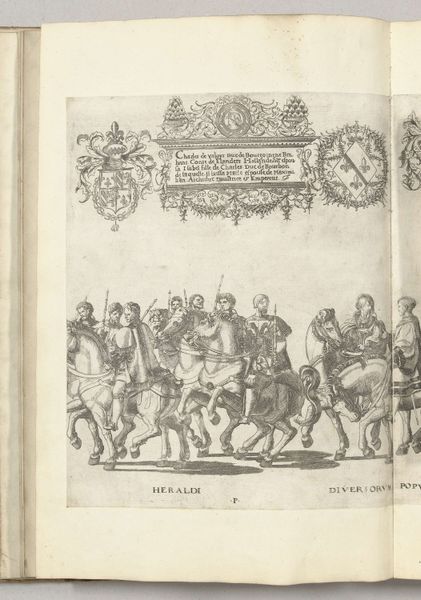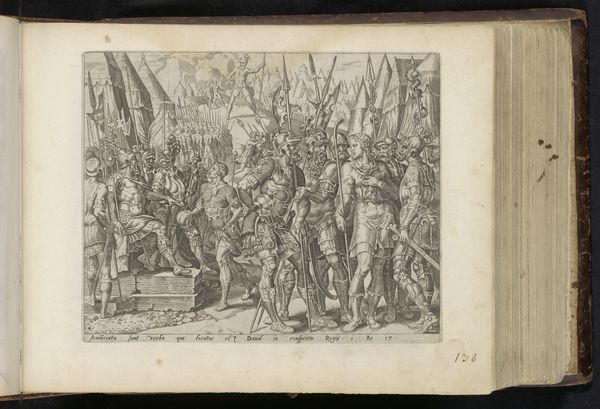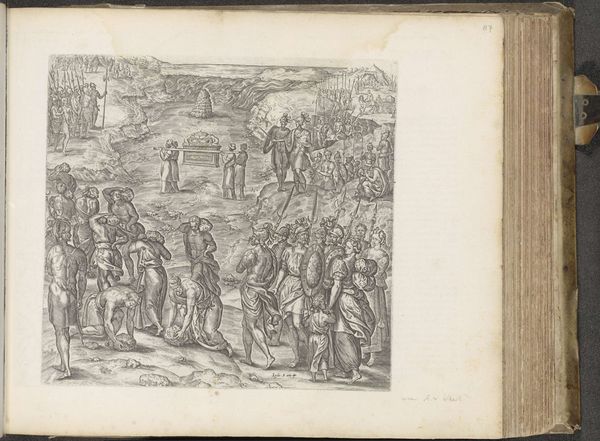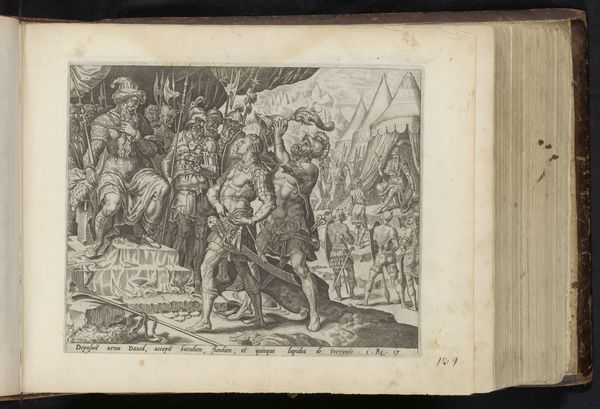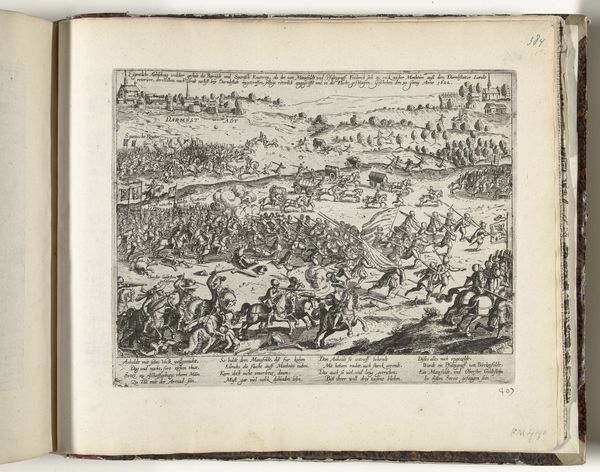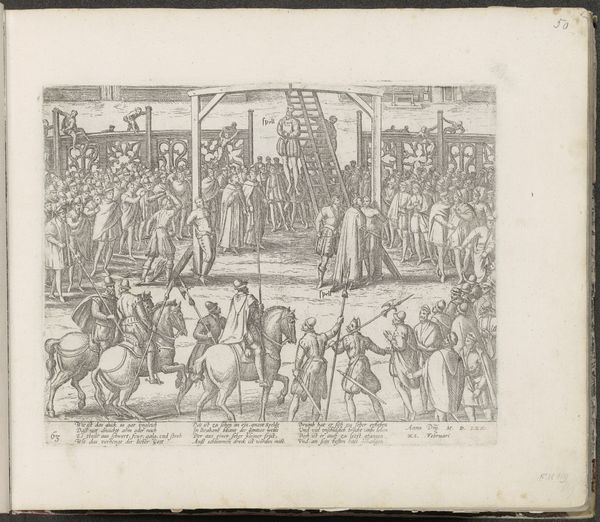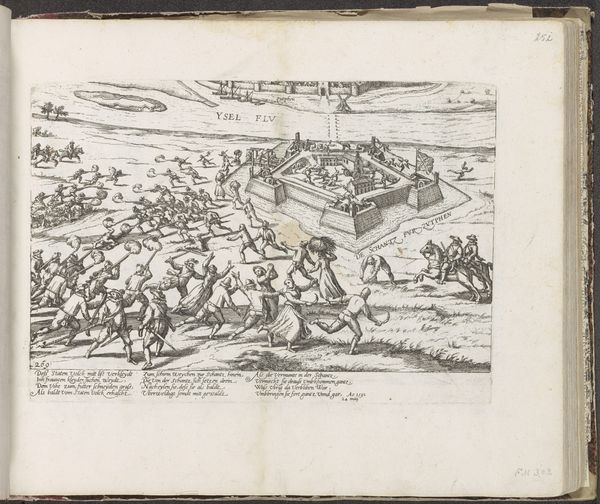
De stoet met aartshertog Ernst bij de intocht te Brussel (deel 4), 1594 1594
0:00
0:00
print, engraving
#
narrative-art
# print
#
figuration
#
11_renaissance
#
coloured pencil
#
history-painting
#
northern-renaissance
#
engraving
Dimensions: height 135 mm, width 500 mm
Copyright: Rijks Museum: Open Domain
This is part four of an anonymous series of etchings from 1594, depicting Archduke Ernst's procession upon his arrival in Brussels. Here we find the enduring motif of the ruler on horseback. Since antiquity, the mounted figure has symbolized power and authority. Consider the equestrian statues of Roman emperors; their raised arms gesture magnanimity, a visual echo of triumph and control. Our subconscious recognition of this pose is deeply rooted in centuries of artistic and cultural reinforcement. Now, observe how this motif reappears, transformed yet familiar, throughout history—from Renaissance portraits to modern-day political imagery. The horse and rider evolve into a potent symbol, echoing through time. The image carries a psychological weight, engaging us on a visceral level with notions of dominance and leadership. The act of representation is never static. This parade is a performance of power, an echo resonating through the corridors of time, reminding us that symbols persist, adapt, and shape our understanding of authority across generations.
Comments
No comments
Be the first to comment and join the conversation on the ultimate creative platform.
